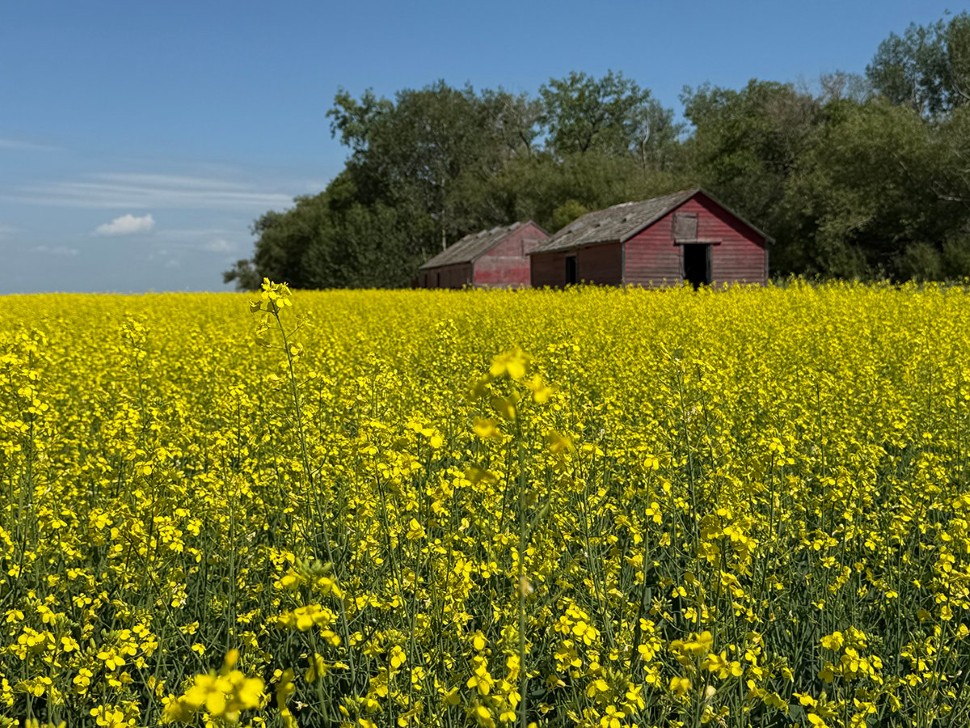Agriculture Canada modelling expects above average yields for most crops
Agriculture Canada is predicting solid yields for most crops on the Prairies, based on computer modelling that was done at the end of July.
“At the national level, the CCYF (Canadian Crop Yield Forecaster) model predicts above-average yields per unit area for 11 of the 12 spring-planted crops compared to the average yields of 2020-24,” says an executive summary of the Agriculture Canada predictions, published on a website called Canadian Crop Metrics.
“Based on these yield projections and the estimated harvest areas from Statistics Canada’s June 2025 Farm Survey, above-average total national production is predicted for spring wheat, winter wheat, durum wheat, canola, corn for grain, soybeans, dry peas, lentils, canaryseed and fall rye.”
To produce the forecast, Agriculture Canada scientists use computer simulations that consider a broad set of available information.
It includes agro-climate data, such as precipitation, summer temperatures and soil moisture, in combination with the normalized difference vegetative index, which are satellite images that measure the health and density of vegetation.
The yield forecast maps on the Canadian Crop Metrics website indicate that many crops have a favourable rating for yield potential.
For instance, the map for canola yield potential shows that most of the Prairies are lime green in colour, meaning favourable conditions. No regions are yellow, indicating below average yield potential.
Agriculture Canada computer models suggest that many regions of the Prairies have favourable (lime green) conditions for the yield potential of canola. The dark green regions are “exceptional” yield potential and the olive green areas represent average yield. Image: Agriculture Canada screenshot
Central Alberta and southwestern Manitoba are designated as dark green, meaning there is “exceptional” yield potential for canola.
The Agriculture Canada forecast does match the on-the-ground conditions in Alberta. The provincial crop report for early August says 90.9 per cent of the canola crop in central Alberta is rated as good to excellent.
Catherine Champagne, an Agriculture Canada researcher in Ottawa who specializes in remote sensing, agro-climate and yield forecasting, said the forecast was done with data up to July 31.
She cautioned that the yield forecast for 2025 is relative to the last five years. The model uses data from 2021, a growing season with severe drought and poor crop yields in Western Canada.
“This (canola) map you’re looking at is comparing the current forecasted yield to the five year average … (which) includes 2021,” she said.
“The weather conditions are a bit patchy. There are some dry areas, especially in the northern parts of the Prairies … (but) the conditions on the Prairies have generally been favourable.”
It’s difficult to predict yields in the middle of summer, so Agriculture Canada experts run the computer model many times to account for possible errors in the data and different weather scenarios in August. That produces a wide range of outcomes.
“The best case yield (for canola) is 45.15 bushels per acre; the worst case yield is 29.18 bu. per acre,” says the CCYF forecast.
In general, the accuracy of the computer simulations have been improving, but the model does struggle in extreme years, such as growing seasons with severe drought, Champagne said.
In 2025, the model is especially bullish for three crops on the Prairies.
“The largest yield increases are forecast for mustard seed, lentils and canaryseed, in the range of 19 to 24 per cent above average,” it says.
The word “it” is appropriate because the scientists rely on the computer model to analyze the information. That way, the yield forecast remains objective.
“We have a tool that goes in and reads the data and pulls out the trends,” Champagne said.
While the yield forecast is favourable for most crops in many regions of Manitoba, Saskatchewan and Alberta, the Peace Country is an exception. The model says spring wheat yields are looking below average in the Peace.
The provincial crop report for Alberta supports that conclusion. As of Aug. 5, only 25 per cent of crops in the Peace region were rated as good to excellent. That’s significantly lower than the entire province, which had a good to excellent rating of 63.6 per cent.
Robert Arnason is a reporter with The Western Producer and Glacier Farm Media.
